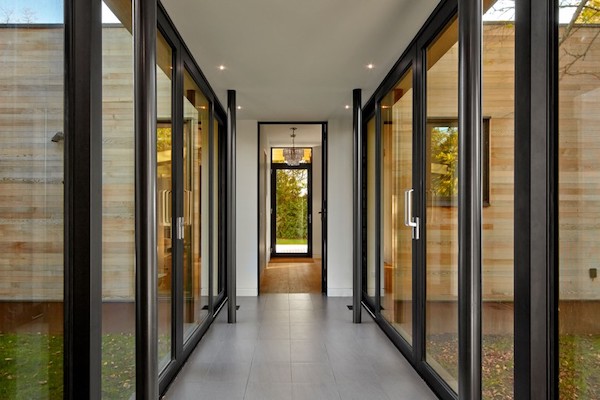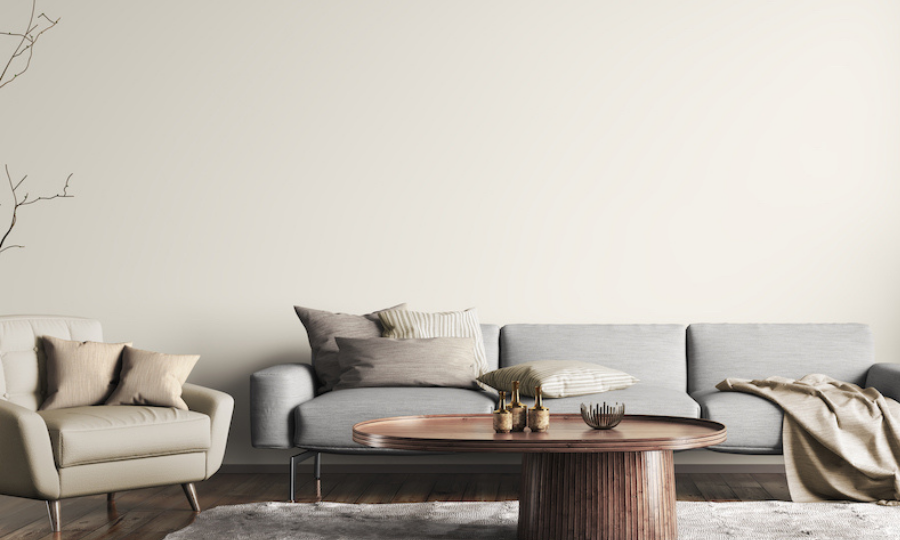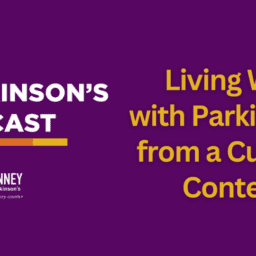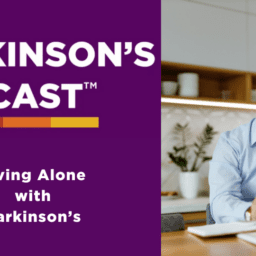As an architect and person living with Parkinson's, Duff Balmer has a wealth of ideas on how to create spaces where people can thrive. In part one of this series, Duff shared his ideas on how to set up your home to live well today. In part two of this four-part series, we've asked Duff to share what he knows about designing a Parkinson's-friendly space that takes symptoms, lifestyle, and budget into account.
What are the most common Parkinson's motor symptoms that you can address when designing a Parkinson's-friendly space?
The most common and impactful motor symptoms are postural instability, freezing of gait, and dyskinesia. These can pose a significant challenge in our daily lives and can increase our risk of falling. Fortunately, there are many adaptations within the home to address these symptoms. By designing spaces that target specific hazard areas and are easier to navigate, your home environment can become essential in bolstering your confidence and independence, especially as motor symptoms progress over time. Here are four relatively easy adaptations you could make:
#1 - Maximize width at thresholds and passages.
This can be especially helpful in minimizing freezing of gait, which tends to occur at these 'bottleneck' locations. A good rule of thumb is that a single door width opening should be roughly doubled where possible. Providing even light levels on each threshold side can also help ease these transitions.
#2 - Eliminate tight turns that force you to take smaller steps.
The smaller the steps you take, the more likely you will fall. This is especially important as you consider more confined spaces, such as in a dressing area or kitchen, where we tend to dual-task more often and therefore may be more distracted. In general, avoid closed cul-de-sacs of space to prevent tight 180-degree turns and be generous with space at these locations.
#3 - Create visual cues within a space to help guide movement.
Here, something as simple as a piece of art at the end of a corridor or window can help you focus your attention and raise your eye level to help improve postural stability. By creating clear focal points, you'll make your home more enjoyable and safer!

#4 - Incorporate a transverse banded pattern on the floor.
Who would have thought a simple banded floor pattern like a miniature crosswalk could facilitate a more even stride length and prevent freezing of gait for those with Parkinson's….but it can! This is highly effective, especially in zones where freezing is most likely to occur, such as at a doorway or shower entry. This patterning can be integrated directly into the flooring, where a more permanent and seamless solution is desired.
How can architectural design be adapted to minimize the impact of non-motor symptoms?
As Parkinson's progresses, our social circle often shrinks, and life gets more restricted and confined to the home. At these moments, how our homes support and preserve our emotional and cognitive health should be more deliberately examined. Here are four ways to design for these issues:
#1 - Address movement issues that can undermine confidence and create anxiety.
Remember that by addressing movement issues, we are also addressing our physical and mental health.
#2 - Support healthy routines and interactions within the home.
 By creating purposefully designed spaces that address specific interests and hobbies (such as an art room, exercise space, or even a coffee nook), we build in moments of stimulation that help to fend off feelings of isolation, apathy, and boredom that often accompany Parkinson's. I like to think of these spaces as 'distraction zones' where I can pursue my passions and forget about Parkinson's for a while.
By creating purposefully designed spaces that address specific interests and hobbies (such as an art room, exercise space, or even a coffee nook), we build in moments of stimulation that help to fend off feelings of isolation, apathy, and boredom that often accompany Parkinson's. I like to think of these spaces as 'distraction zones' where I can pursue my passions and forget about Parkinson's for a while.
#3 - Create smaller zones to take a break.
Given the ON and OFF times we experience with Parkinson's and changes in mood that often come with this, designing smaller and more intimate spaces that accommodate moments of pause, such as a small seating nook, is important, especially in a larger household setting. A sliding door at these locations can be especially effective in allowing it to be open or closed depending on need without being cut off from the rest of the home.
#4 - Connect with nature.
Nature plays an important role in our lives as a continual source of stimulation and well-being. By bringing nature more consciously into our homes through natural views, materials, and light, we can begin to harness this positive force, especially as we are forced to spend more time indoors.
What are the main design choices you might make for someone with more serious cognitive issues related to Parkinson's?
In the case of more serious cognitive issues, such as dementia, that may accompany Parkinson's in later stages, this is a more challenging issue, especially as symptoms become more severe. In its milder forms, however, dementia can be effectively managed in the home by maintaining an uncluttered environment that promotes ease of orientation and way-finding. Enhanced light levels can also be helpful, and, more generally, a simplification of décor and reduction in high contrast materials and colors can be more pleasing for people with Parkinson's.
What are the first low-cost home modifications someone living with Parkinson's might consider? (These low-cost modifications might alleviate what kinds of safety risks?)
One should always look at the highest risk areas of the home as a first step, such as the staircase, bedroom, or bathroom, where falls most often occur. Here are four low-cost strategies and features that can be considered in these zones:
#1 - Do a walk-through with an occupational therapist.
This is always a great starting point in identifying specific risk areas and as an effective way to ensure money is being spent in the right areas of the home based on individualized needs.
#2 - Increase light levels to help you focus on tasks and prevent falling.
This can often be achieved by simply re-lamping a fixture. There are also now battery-operated LED ceiling and wall lights with remote controls you can incorporate within a space to augment lighting levels and help focus on specific tasks. These are much less expensive than more conventional hard-wired versions and can be adjusted over time.

#3 - De-clutter!
I can't emphasize this enough as a simple measure that can make a huge difference in increasing safety, especially around the main pathways of the home. The positioning of furniture and the selection of more fixed 'steadying' pieces like a couch along these primary circulation routes can also help improve safety.
#4 - Reduce the number of floor surfaces.
Flooring is also a relatively low-cost way of increasing safety throughout the home. Generally, the more uniform and fewer surfaces you have, the better. This may be as simple as removing loose area rugs or installing transition strips at surface changes to eliminate tripping hazards. These transition strips can be purchased at most home improvement stores and are easy to install.
How can home design be adapted to serve the needs of care partners?
The relationship between a care partner and a person living with Parkinson's should be a key consideration when considering house design. Where the care partner is a spouse or family member, as is often the case, maintaining a balance between the needs of the person with Parkinson's and those of the care partner is vital. A graduated approach to home adaptation is usually the best way to make room for new things while preserving what makes your house a home. Here are three actions worth taking:
#1 - Reflect on your care partner's needs.
Creating more personalized spaces – such as a home office, sitting area, or bedroom can play an important role in allowing your care partner to preserve a sense of routine and normalcy in their lives. This is especially important as your routine and sleep patterns become increasingly divergent. These spaces should offer a sense of respite within the home where your care partner can tend to their own needs or simply relax.

#2 - Make it balanced.
When designing these more personalized spaces in your home, make sure they are carefully integrated within the house's overall plan so they maintain a close physical and auditory connection to you and your care partner. This allows your home to straddle between a sense of connection and separation in acknowledging your care partner's constant and challenging balancing act.
#3 - Make time to getaway.
This should not be under-estimated and refers more directly to your home's location in accessing community and services or visiting friends easily. For example, while it is not always possible to access your garden, a front porch can provide a good alternative in enabling a sense of 'being away' without actually leaving your property.
How will the needs of your care partner change over time? What adjustments to the home can help adjust to the more advanced stages of Parkinson's?
Through the overall progression of Parkinson's, arguably the most challenging condition from the perspective of the physical environment occurs at the later stages of the disease. This often requires a significant readjustment of the home, which can fundamentally alter the use of each space. For example, in the case of the bathroom, this often demands a significant re-think in terms of the overall planning and detailing as mobility aids become more necessary, which can be costly and disruptive to undertake. Here are three planning options to consider:
#1 - Plan FOR one level.
In more advanced stages of Parkinson's, planning the home on a single floor level becomes increasingly critical in terms of accessibility for you and the peace of mind of your care partner. Accommodating an interconnected bedroom/washroom suite on the home's main floor may be considered in this scenario. However, where this is not possible, a stairlift can offer a viable alternative in ensuring each level of the home remains safe and accessible.
#2 - Consider long-term accessibility.
In planning a main-floor suite, consult accessibility guidelines to help you determine critical dimensions needed so you can maneuver space at doorways and have proper turning radii in more constrained spaces such as the washroom. Given that your care partner provides direct assistance in many of the daily tasks within these spaces, these added dimensions become even more vital in ensuring ease of use.
#3 - Be realistic and think ahead, even if it's not fun and may even be scary.
In the case of our own home, beyond the many design adaptations that we've made in anticipating more advanced stages of Parkinson's, my wife and I are aware that at a certain point, the environmental barriers of our multi-story home will likely exceed my (our) personal abilities. This speaks to the need to be realistic in our homes' true capacity and plan so that decisions down the road are easier to make. From our perspective, investing in modifications now and extending the long-term use of our home even by a few years represents a positive outcome. For others, this set of circumstances may prompt a different decision, such as one to re-locate sooner to an easier-to-manage dwelling. This is always a personal decision that should be revisited frequently throughout your Parkinson's journey. In all cases, it is important to remain optimistic about the capacity of your home and recognize that through careful planning and well-considered adaptations, it is possible to live well/ longer in your home with Parkinson's. For many of us, this is the most critical objective.
There's more to come
This is the second post in our series, “Setting Up Your Home Environment to Live Well with Parkinson’s." You can read the first post in the series here. In the third post, Duff shared information for people who want to design a Parkinson's-friendly home from scratch. The fourth and final post will be for those interested in the broader social and environmental implications of living well with Parkinson’s.
 Duff Balmer is an architect, designer of living spaces, and person living with Parkinson's. In dealing with his own diagnosis, symptoms, and future, Duff has begun imagining the many ways that living spaces can be re-imagined, re-designed, or re-configured to accommodate the needs of those with Parkinson's. "Setting Up Your Home Environment to Live Well with Parkinson's" is a four-part series presenting philosophies, strategies, and design recommendations to make homes safer, more efficient, more comfortable, and more conducive to supporting the needs of those living with Parkinson's.
Duff Balmer is an architect, designer of living spaces, and person living with Parkinson's. In dealing with his own diagnosis, symptoms, and future, Duff has begun imagining the many ways that living spaces can be re-imagined, re-designed, or re-configured to accommodate the needs of those with Parkinson's. "Setting Up Your Home Environment to Live Well with Parkinson's" is a four-part series presenting philosophies, strategies, and design recommendations to make homes safer, more efficient, more comfortable, and more conducive to supporting the needs of those living with Parkinson's.


















